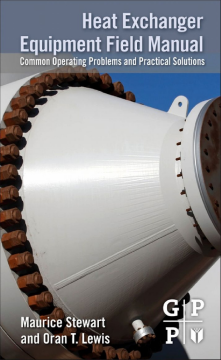
Additional Information
Book Details
Abstract
From upstream to downstream, heat exchangers are utilized in every stage of the petroleum value stream. An integral piece of equipment, heat exchangers are among the most confusing and problematic pieces of equipment in petroleum processing operations. This is especially true for engineers just entering the field or seasoned engineers that must keep up with the latest methods for in-shop and in-service inspection, repair, alteration and re-rating of equipment. The objective of this book is to provide engineers with sufficient information to make better logical choices in designing and operating the system. Heat Exchanger Equipment Field Manual provides an indispensable means for the determination of possible failures and for the recognition of the optimization potential of the respective heat exchanger.
- Step-by-step procedure on how to design, perform in-shop and in-field inspections and repairs, perform alterations and re-rate equipment
- Select the correct heat transfer equipment for a particular application
- Apply heat transfer principles to design, select and specify heat transfer equipment
- Evaluate the performance of heat transfer equipment and recommend solutions to problems
- Control schemes for typical heat transfer equipment application
"Focusing on the various types of heat transfer equipment used in the upstream and downstream oil and gas value chain, Stewart and Lewis present advice on maintenance and optimization and diagnosing and repairing operational problems. They cover heat transfer theory; heat exchanger configurations; inspecting, maintaining, and repairing tubular heat exchangers; and repairing, altering, and re-rating. Though the book is indeed small enough to carry in the field, the information could also be useful in the shop. Gulf Professional is an imprint of Elsevier."--Reference and Research News, October 2012
